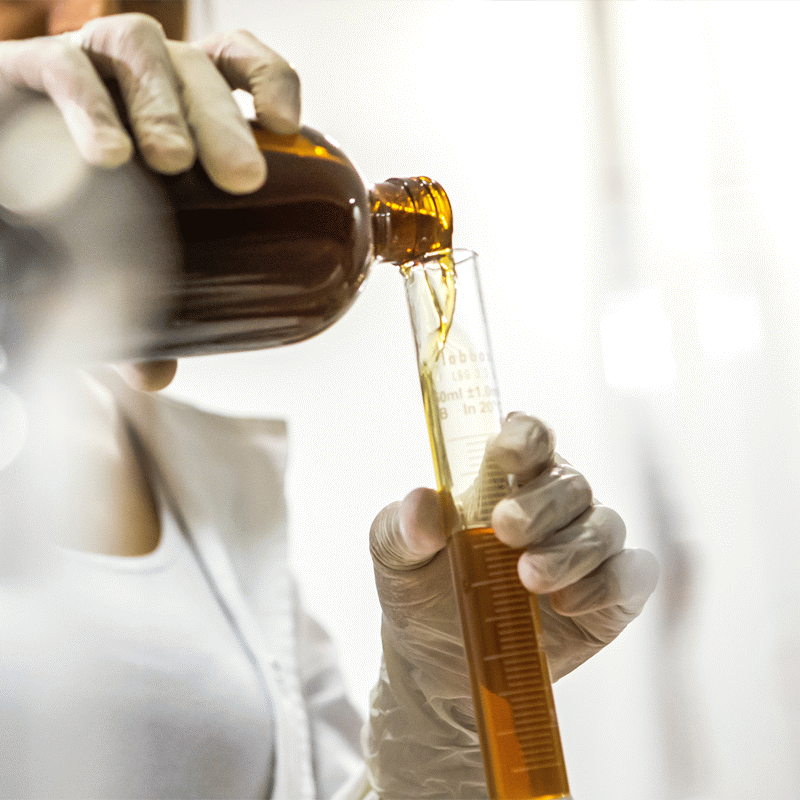-
Categories
-
Pharmaceutical Intermediates
-
Active Pharmaceutical Ingredients
-
Food Additives
- Industrial Coatings
- Agrochemicals
- Dyes and Pigments
- Surfactant
- Flavors and Fragrances
- Chemical Reagents
- Catalyst and Auxiliary
- Natural Products
- Inorganic Chemistry
-
Organic Chemistry
-
Biochemical Engineering
- Analytical Chemistry
- Cosmetic Ingredient
-
Pharmaceutical Intermediates
Promotion
ECHEMI Mall
Wholesale
Weekly Price
Exhibition
News
-
Trade Service
[ Focus on Chemical Machinery Equipment Network ] Cytology, as one of the four basic disciplines of life sciences, occupies an important position in the development plan of basic disciplines in China.
Whether it's natural animals or plants or human society, any biological phenomenon comes from the function of cells.
However, in the field of scientific research, all kinds of scientific research related to cell research, such as cytology and cell biology, belong to relatively young subjects.
This is limited by the limits of human visual exploration, and the human eye cannot directly observe cells.
It was not until the maturity and development of various scientific instruments that the Department of Cell Biology could be systematically constructed.
Nowadays, thanks to the increasing advancement of science and technology, more scientific instruments, such as cell biology instruments, have been put into cell research work.
In this issue of 2020 instrument series inventory, we will inventory some new products of cell biology instruments for readers.
Chemical machinery and equipment network hotspots pay attention to chemical machinery and equipmentWhether it's natural animals or plants or human society, any biological phenomenon comes from the function of cells.
However, in the field of scientific research, all kinds of scientific research related to cell research, such as cytology and cell biology, belong to relatively young subjects.
This is limited by the limits of human visual exploration, and the human eye cannot directly observe cells.
It was not until the maturity and development of various scientific instruments that the Department of Cell Biology could be systematically constructed.
Nowadays, thanks to the increasing advancement of science and technology, more scientific instruments, such as cell biology instruments, have been put into cell research work.
In this issue of 2020 instrument series inventory, we will inventory some new products of cell biology instruments for readers.
Note: This article is incomplete statistics and is for reference only.
Berton, USA: BioTek Cytation 7 cell imaging multifunctional detection system
Berton, USA: BioTek Cytation 7 cell imaging multifunctional detection systemTime to market: January 2020
The Cytation 7 cell imaging microplate detection system integrates a fully automatic digital upright and inverted wide-field microscope and a convenient multi-functional microplate reading system.
The three functional modules are integrated into a compact system.
The inverted microscope imaging module can complete the fluorescence field, bright field and color bright field imaging of the objective lens from 1.
25× to 60×, and has a wide range of applications; the upright microscope can complete the reflected light and transmitted bright field imaging, which can further expand the application range of the product.
The upside-down imaging system is integrated on one instrument to meet the experimental needs of imaging users.
The three functional modules are integrated into a compact system.
The inverted microscope imaging module can complete the fluorescence field, bright field and color bright field imaging of the objective lens from 1.
25× to 60×, and has a wide range of applications; the upright microscope can complete the reflected light and transmitted bright field imaging, which can further expand the application range of the product.
The upside-down imaging system is integrated on one instrument to meet the experimental needs of imaging users.
Miltenyi Biotec: CliniMACS Prodigy system, a fully automatic multifunctional cell processing system
Miltenyi Biotec: CliniMACS Prodigy system, a fully automatic multifunctional cell processing system Time to market: February 2020
CliniMACS Prodigy is a fully automatic cell processing system developed by Miltenyi based on its magnetic bead sorting MACS® technology and CliniMACS® Plus system, which integrates cell sorting, cell centrifugation, washing, and cell culture.
The system is also a GMP-level cell preparation platform integrating automation, standardization, scale and integration.
The system is also a GMP-level cell preparation platform integrating automation, standardization, scale and integration.
The CliniMACS Prodigy® instrument integrates complex cell therapy laboratories into one platform.
It uses standardized procedures to automatically control the method and cooperates with closed sterile pipelines to complete various complex cell operations, effectively avoiding possible errors in manual operations.
And the risk of contamination, the efficiency of the experiment is improved, and the reproducibility of GMP-grade cell preparation is guaranteed.
Therefore, using this stable and flexible platform can easily transform basic research into innovative cell therapy applications.
It uses standardized procedures to automatically control the method and cooperates with closed sterile pipelines to complete various complex cell operations, effectively avoiding possible errors in manual operations.
And the risk of contamination, the efficiency of the experiment is improved, and the reproducibility of GMP-grade cell preparation is guaranteed.
Therefore, using this stable and flexible platform can easily transform basic research into innovative cell therapy applications.
Furuda: AccuLift™ Laser Capture Microdissection System
Furuda: AccuLift™ Laser Capture Microdissection System Time to market: May 2020
Fluidigm AccuLift™ Laser Capture Microcutting System (LCM) is a dual laser microcutting system with infrared (IR) laser capture and ultraviolet (UV) laser cutting.
Unique laser geometric positioning, infrared laser capture and ultraviolet laser cutting provide higher resolution, which can ideally capture single cells or small amounts of cells; save precious samples and repair tissues to the greatest extent, designed for a variety of sample starting volumes Designed to obtain enough nucleic acid or protein for downstream analysis; gentle infrared laser capture to preserve the integrity of biomolecules to obtain consistent genomic or proteomic feature evaluation.
The Fluidigm AccuLift™ laser capture microdissection system (LCM) is equipped with a collection cap, slide consumables and extraction kits, and a user-friendly software operating system.
Huawei Life Technology: Haifeng Series Type I_Single cell capture and incubation_directed evolution_drop-in PCR
Huawei Life Technology: Haifeng Series Type I_Single cell capture and incubation_directed evolution_drop-in PCR Time to market: July 2020
The Haifeng HW-SeaBreeze lab-on-a-chip can realize operations such as flexible single-cell capture, precise control of liquid flow/droplet, in-drop PCR, label-free screening, organ chip, and establishment of a biomimetic environment.
The key technologies are: (1) Research object-biological particles with a diameter of 0.
1-2000um: cells/bacteria/viruses/nematodes; (2) mononuclear droplets-high throughput, single cell droplet preparation, can be deleted Droplets and multi-nuclear droplets; (3) Precise temperature control-constant temperature incubation: microfluidic culture tank/organ chip; droplet digital PCR); (4) flexible control-keep alive; droplet/liquid flow, electric field/ Air pressure/laser multi-scene control; (5) Multi-type screening-support Raman/image/impedance and other label-free screening, fluorescent label screening; (6) Organ chip-droplet/liquid flow, liquid/gas/oxygen/ Temperature/light/electricity/hour: multi-dimensional precise control; (7) Consumables customization-the survival of organisms in the chip is >7 days, customized on demand.
Realize the need for cost savings.
At present, it has been widely used in scientific research work such as cell culture, drug development, organ chip, tumor cell medical treatment, bionic microenvironment, library, single cell (bacterial) droplet packaging/manipulation/screening, uniparental cloning, intra-drop PCR, directed evolution, etc.
.
The key technologies are: (1) Research object-biological particles with a diameter of 0.
1-2000um: cells/bacteria/viruses/nematodes; (2) mononuclear droplets-high throughput, single cell droplet preparation, can be deleted Droplets and multi-nuclear droplets; (3) Precise temperature control-constant temperature incubation: microfluidic culture tank/organ chip; droplet digital PCR); (4) flexible control-keep alive; droplet/liquid flow, electric field/ Air pressure/laser multi-scene control; (5) Multi-type screening-support Raman/image/impedance and other label-free screening, fluorescent label screening; (6) Organ chip-droplet/liquid flow, liquid/gas/oxygen/ Temperature/light/electricity/hour: multi-dimensional precise control; (7) Consumables customization-the survival of organisms in the chip is >7 days, customized on demand.
Realize the need for cost savings.
At present, it has been widely used in scientific research work such as cell culture, drug development, organ chip, tumor cell medical treatment, bionic microenvironment, library, single cell (bacterial) droplet packaging/manipulation/screening, uniparental cloning, intra-drop PCR, directed evolution, etc.
.
Dolomite Bio, UK: Nadia single-cell capture RNA sequencing
Dolomite Bio, UK: Nadia single-cell capture RNA sequencing Time to market: October 2020
Nadia is a single-cell capture system based on Droplet technology.
It is equipped with multiple channels and can process 1-8 samples in parallel.
It works with high throughput and can capture up to 50,000 cells in 20 minutes.
It is equipped with multiple channels and can process 1-8 samples in parallel.
It works with high throughput and can capture up to 50,000 cells in 20 minutes.
The system is equipped with a stirring device for cells and beads to ensure that the cells and beads are in a suspended state and improve the efficiency of capturing single cell droplets; at the same time, the unique temperature control module maintains the cell in a transcriptional state and restores the true expression of mRNA in the cell; Cell Droplet is compatible with commercially available library construction kits on the market, such as Illumina for subsequent library construction and sequencing to facilitate single-cell research.
It has been applied to research work such as single-cell RNA sequencing (scRNA Seq), single-cell nuclear RNA sequencing (sNuc-Seq), and single-cell agarose coating.
Specific research areas include oncology research, immunology research, and stem cell research , Neurobiology, Infection and Immunity, Microbiology Research, etc.
Specific research areas include oncology research, immunology research, and stem cell research , Neurobiology, Infection and Immunity, Microbiology Research, etc.
Thermo Fisher: Invitrogen Countess 3 series automatic cell counter
Thermo Fisher: Invitrogen Countess 3 series automatic cell counter Time to market: November 2020
Compared with the previous generation models, Invitrogen™ Countess™ 3 and Countess™ 3 FL automatic cell counters use artificial intelligence (AI) and apply deep learning neural network algorithms to achieve high-accuracy cell counting.
The instrument uses two high-performance cell counters to meet the needs of a variety of laboratories, and at the same time, it can effectively avoid the difference between users caused by the use of manual blood counting plates.
In addition, the equipment has functions such as automatic light intensity adjustment, automatic focusing and automatic storage, which are convenient for scientific research personnel to operate.
In addition, the equipment has functions such as automatic light intensity adjustment, automatic focusing and automatic storage, which are convenient for scientific research personnel to operate.
The above is the inventory of new cell biology instruments in 2020.
Original Title: Inventory of Instrument Series in 2020-Cell Biology Instruments







